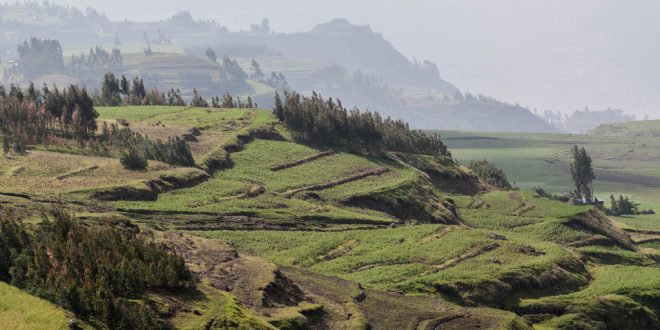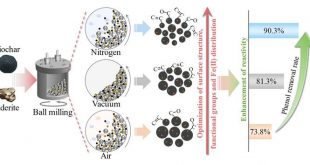Nairobi, 5 September 2019 – Land restoration has tremendous potential to help the world limit climate change and achieve its aims for sustainable development, according to a new study by the International Resource Panel (IRP).
Hot on the heels of the recent report of the Intergovernmental Panel on Climate Change (IPCC),which found that climate change was reducing land’s ability to sustain humanity, the IRP projects forward to examine the likely results if we rehabilitate land. In doing so, the IRP found positive spin- offs to support all 17 Sustainable Development Goals agreed to by the world’s nations as part ofthe 2030 Agenda for Sustainable Development.
Land Restoration for Achieving the Sustainable Development Goals was released today at the 14th session of the Conference of the Parties to the United Nations Convention to Combat Desertification, in New Delhi, India.
It adds to recent IRP research (Global Resources Outlook 2019, released in March 2019), which made a strong case for greater resource efficiency when it showed that up to 90 per cent of biodiversity loss and water stress, as well as up to half of the world’s global greenhouse gasemissions, can be attributed to how we extract and use natural resources.
“It is clear that a huge step-up is required on all fronts if the world is to achieve sustainabledevelopment and reverse the climate and nature crises,” said Inger Andersen, Executive Director of the United Nations Environment Programme (UNEP).
“Landscape restoration will bring obvious climate, biodiversity and livelihood benefits, and investing in nature’s infrastructure will provide a key ingredient for planetary security,” she added.“The Panel’s work shows how well-planned restoration at a landscape scale not only halts degradation, but also generates positive results. It is time for innovation, holistic thinking andambitious action to put us on the path to sustainability.”
The United Nations Decade of Ecosystem Restoration 2021-2030 recognizes that global action on land restoration will be needed if we are to meet the target of restoring 350 million hectares of degraded landscapes by 2030. Restoring this amount of land between now and 2030 could generate $US 9 trillion in ecosystem services and take an additional 13-26 gigatons of greenhouse gases out of the atmosphere.
The IRP uses a series of examples to illustrate co-benefits and trade-offs between the Sustainable Development Goals in the land restoration process. It recommends systemic analysis – before investment is made – to avoid unintended consequences. For example, monoculture planting might achieve a soils restoration objective outlined under Sustainable Development Goal 15 (Life
on Land), and may at the same time provide some benefits for the planet’s climate (Goal 13)through carbon sequestration, but might fail to address biodiversity conservation (Goal 15).
Currently, about a quarter of the world’s land is degraded. Land restoration and rehabilitation together represent one of three primary strategies for achieving Goal 15, and particularly for meeting the land degradation neutrality target under that goal. The Panel explores the extent to which land restoration helps to achieve other Sustainable Development Goals.
Key findings of the new study include:
- Land restoration and rehabilitation can have significant co-benefits for all Sustainable Development Goals.
- The extent of restoration co-benefits, and potential risks and trade-offs, varies widely among the Goals and their respective targets.
- The co-benefits of the restoration process are often very different to that of the restored land, and often work at different temporal scales.
- Quantitative and qualitative modelling, including scenario development, at local to global scales, can help guide future investments and coordinate projects.
- An integrated landscape approach, including targeting investments, is key to increasing the total return on land restoration investments.
SOURCE: UN Environment
 الشبكة اليمنية للعلوم والبيئة (يمن ساينس) موقع يهتم بأخبار العلوم والتكنولوجيا والصحة والبيئة والسكان
الشبكة اليمنية للعلوم والبيئة (يمن ساينس) موقع يهتم بأخبار العلوم والتكنولوجيا والصحة والبيئة والسكان





